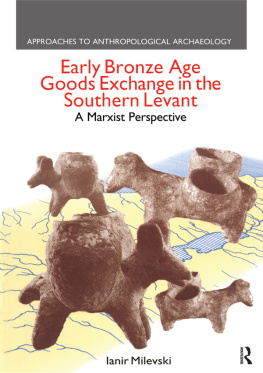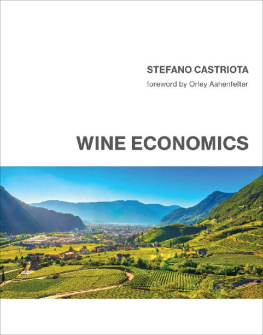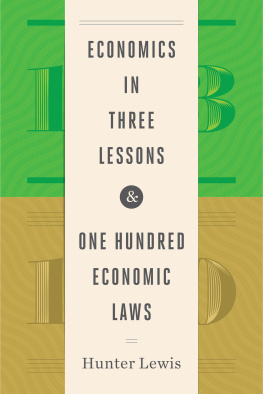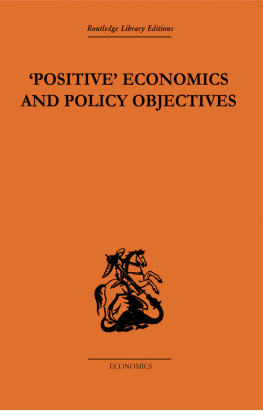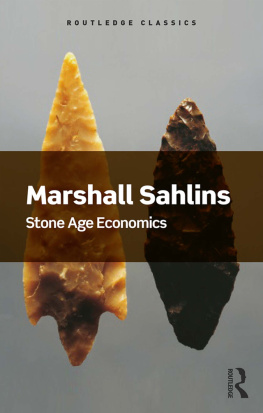
STONE AGE ECONOMICS
Stone Age Economics is a classic of economic anthropology, ambitiously tackling the nature of economic life and how to study it comparatively. This collection of six essays, first published in 1974, is one of Marshall Sahlinss most influential and enduring works, asserting that Stone Age economies formed the original affluent society. The book examines notions of production, distribution and exchange in early communities and examines the link between economics and cultural and social factors.
This edition contains a new preface by Marshall Sahlins, discussing how the book came to be written, its influence and continuing relevance today.
Marshall Sahlins is Charles F. Grey Distinguished Service Professor of Anthropology Emeritus at the University of Chicago. His numerous publications include Anahulu: The Anthropology of History of the Kingdom of Hawaii (with Patrick V. Kirch, 1992) and How Natives Think: About Captain Cook For Example (1995).
ROUTLEDGE CLASSIC ETHNOGRAPHIES bring together key anthropology texts which have proved formative in the development of the discipline. Originally published between the 1930s and the 1980s, these titles have had a major impact on the way in which anthropology, and most particularly ethnography, is conducted, taught, and studied.
Each book contains the text and illustrations from the original edition, as well as a new preface by a leading anthropologist explaining the books contribution to the development of anthropology and its continuing relevance in the twenty-first century.
ABORIGINAL WOMAN
Sacred and profane
Phyllis M. Kaberry
WOMEN OF THE GRASSFIELDS
A study of the economic position of women in Bamenda, British Cameroons
Phyllis M. Kaberry
STONE AGE ECONOMICS
Marshall Sahlins
THE MAASAI OF MATAPATO
A study of rituals of rebellion
Paul Spencer
THE SAMBURU
A study of gerontocracy
Paul Spencer
HUNGER AND WORK IN A SAVAGE TRIBE
A functional study of nutrition among the southern Bantu
Audrey Richards
CUSTOM AND POLITICS IN URBAN AFRICA
A study of Hausa migrants in Yoruba towns
Abner Cohen
STONE AGE ECONOMICS
Marshall Sahlins

First published in the United Kingdom in 1974
by Tavistock Publications Limited, London
This edition first published 2004
by Routledge
11 New Fetter Lane, London EC4P 4EE
Routledge is an imprint of the Taylor & Francis Group
1972, 2004 Marshall Sahlins
Printed and bound in Great Britain by
TJ International Ltd, Padstow, Cornwall
All rights reserved. No part of this book may be reprinted or reproduced or utilised in any form or by any electronic, mechanical, or other means, now known or hereafter invented, including photocopying and recording, or in any information storage or retrieval system, without permission in writing from the publishers.
British Library Cataloguing in Publication Data
A catalogue record for this book is available from the British Library
ISBN 0415320100
FOR JULIA, PETER, AND ELAINE
Contents
PREFACE TO NEW EDITION
Like other anthropological subspecies of its kind, each having to do with a distinct subdivision of a cultural order political anthropology, legal anthropology, medical anthropology, etc. the field of economic anthropology has changed almost beyond recognition since the appearance of Stone Age Economics in 1972. So many and diverse are these changes, it would require another book rather than a new preface to reflect upon them; hence I confine myself here to certain issues and societies of the kind that were central to the original edition. In this connection the changes in the subdiscipline have seemingly been negative, if not fatal, as witness the fact that general university courses offered under the title Economic Anthropology are becoming increasingly quaint and correspondingly rare. Something similar could be said for Political Anthropology and Legal Anthropology, and for similar reasons. Not that the interest in the many social varieties of material or political life has slackened, so much as what had been confidently called the economy or the political system is being rethought as the culture. Rather than a separate sphere of existence, economic activity is perceived as encompassed in cultural order. Hence it needs to be understood in the relative terms of a given mode of human existence: as the expression, in a material register, of the values and relations of a particular form of life. Here is the economic as a function rather than a structure let alone the all-determining infrastructure. So Stephen Gudeman, Richard Wilk and other leading scholars of the old school are bringing us into a new era of cultural economics. I would like to think of Stone Age Economics as an early contribution to that desirable end.
Although it cannot be claimed even now that the revolution has been accomplished, the three decades since the first edition of this book have been witness to many worldly and intellectual realizations of the cultural constitution of material practice. Paradoxically, something good to that effect came out of the perverse role attributed to culture in undoing the best laid plans of modernization and economic development experts. As the saying goes, developing countries, with American help, never develop. Almost always the usual suspect is the local culture. The peoples culture is whats the matter with them: an impediment to (bourgeois) economic rationality and progress thus to becoming happy and good, just like us. (The alternative, rarely contemplated except by the local people, would be to define economic development as the material security and enrichment of their own way of life.) But then, economic anthropology had its own built-in ethnocentrism, likewise amounting to a structural contradiction, as it insisted on analytically separating out the economy in societies where there was none. In traditional Fiji or Tierra del Fuego there was no differentiated, self-regulating economic domain: no purely pragmatic sphere of relationships on the (ideal-typical) model of the capitalist-market system. By supposing more or less by definition that there was such a thing, economic anthropology was burdened from the beginning with an ethnographic category mistake. But the real imperialism that involved imposing our cultural system on Fijians and others proved to be bad enough; we need not duplicate it in the form of anthropological theory.
The traditional economic terms of Fijians were not what our economic science would recognize as such. Their economic terms were chiefs (the recipients of tributes and dispensers of largesse), sisters son (a specially privileged relative), be of good heart my kinsmen (a near-imperative solicitation of material help), sea people (specialized clans of fishers and sailors), whale teeth (the preeminent valuables), border allies (contracted by gifts), war god (subject of lavish offerings), etc. Such were the famous relations of production, distribution and consumption, organizing the exploitation of nature and the provisioning of society according to the meaningful values of persons and the objects of their existence. By this cultural praxis, the material forces and circumstances were given specifically Fijian effects. How to understand the division of labor by sex in the coastal regions of the Fiji Islands a significant aspect of the relations of production? Start with the symbolic proportion that men are to women as sea is to land and exterior to interior. In local terms, it follows that the farming of the bush and the fishing of the deep sea are mens work, the gathering (as of firewood) around the village and netting fish in the lagoon are womens domains. If I had the space and readers the patience, it could be shown that the values thus organizing production were encoded throughout the culture, from cosmogonic myths to the rituals of kingship and the structures of domestic space. Production is an onto-logic of people, places and things that brings to bear the entire cultural scheme on the most elementary material activities. Yet the distinctively Fijian organization of their islands is hardly the only one possible. And however prudently Fijians as individuals operate with the values of their cultural scheme, it can hardly be argued that their values the superiority of the sea, the divinity of the chief, the rights of the sisters son to his maternal uncles goods, the material benefits from providing and consuming human sacrifices that their values themselves represent a maximization of the material utilities. Rationality operates within a relative cultural order which for its part has its own reasons.
Next page


